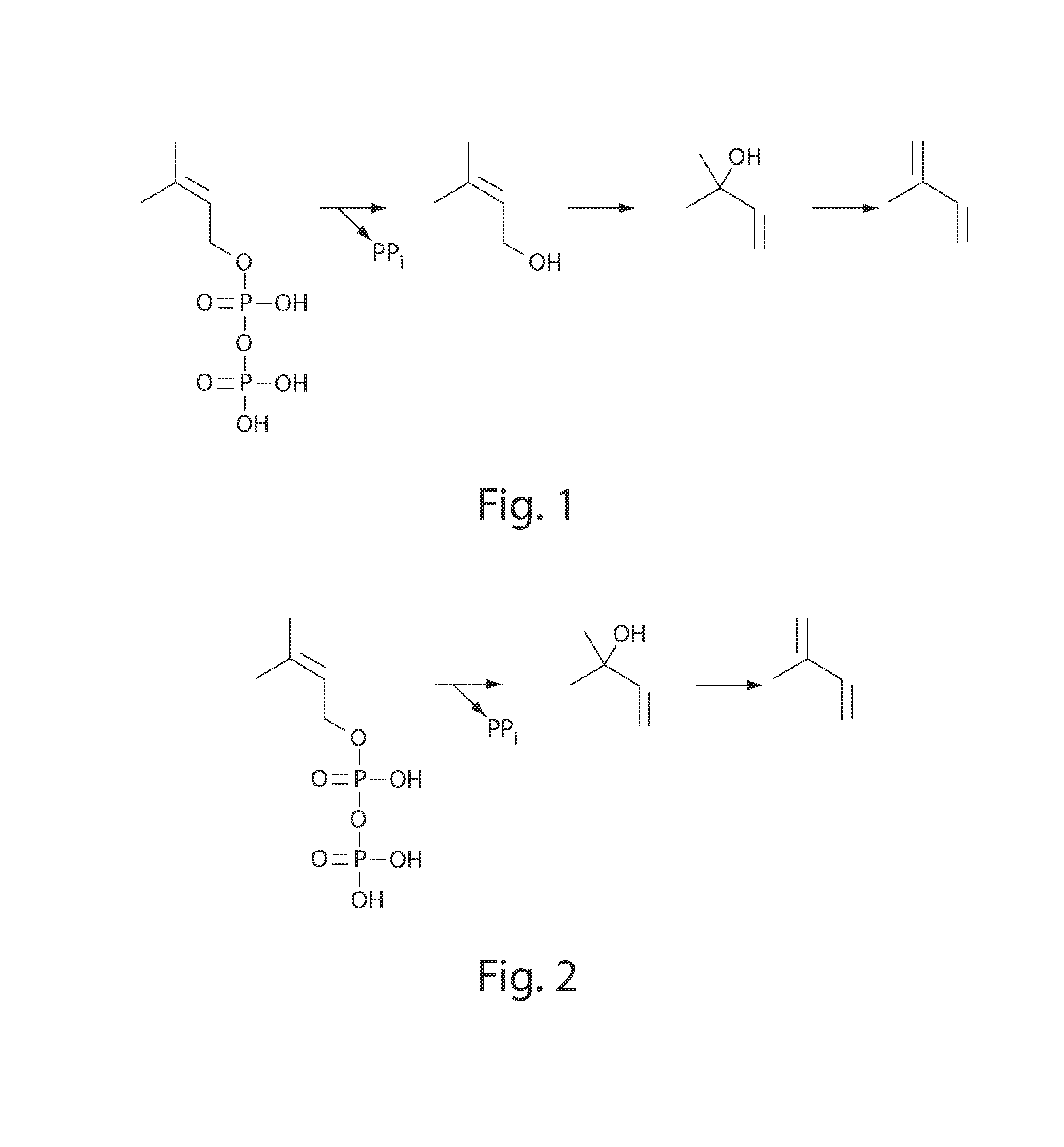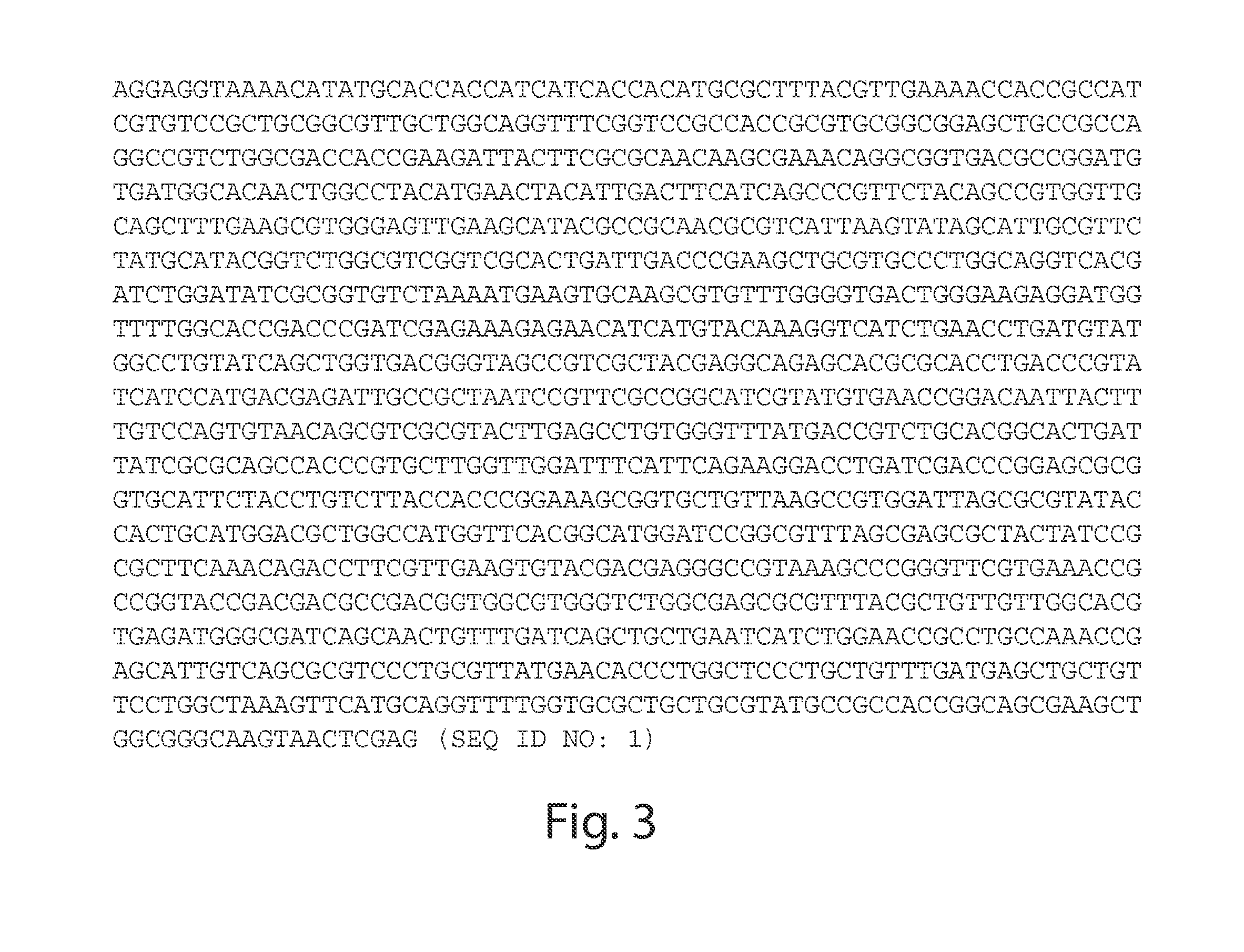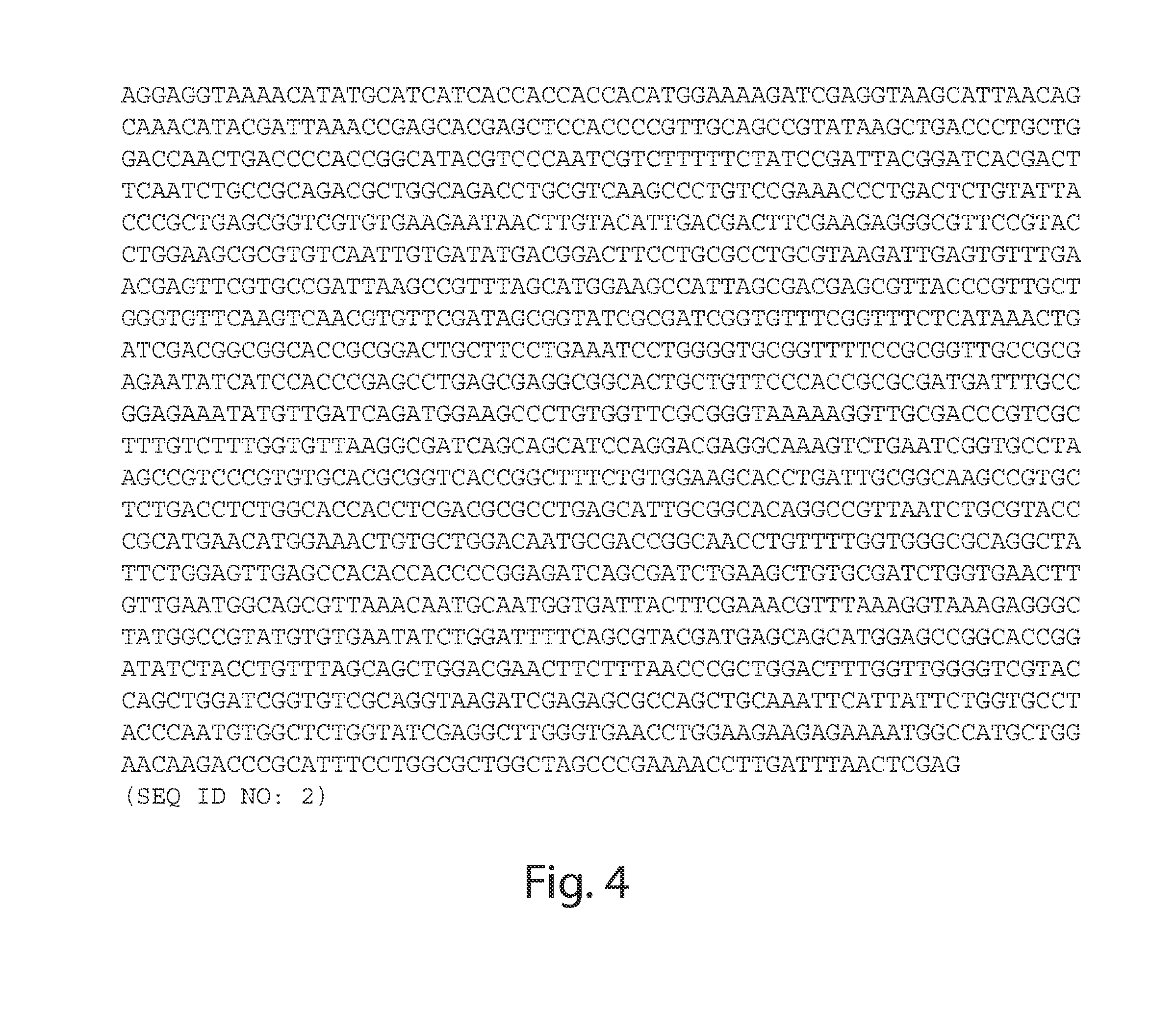Microorganisms and processes for the production of isoprene
a technology of isoprene and microorganisms, which is applied in the direction of lyase, transferase, waste based fuel, etc., can solve the problems of reducing the source of four and five carbon chain molecules, reducing the number of carbon chain molecules found, and high levels of intracellular dimethylallyl diphosphate are toxic to the cells,
- Summary
- Abstract
- Description
- Claims
- Application Information
AI Technical Summary
Benefits of technology
Problems solved by technology
Method used
Image
Examples
example 1
MICROORGANISM FOR THE PRODUCTION OF ISOPRENE FROM 3-METHYL-2-BUTEN-1-OL
[0079]This working example shows the production of isoprene from 3-methyl-2-buten-1-ol by a non-naturally occurring microorganism expressing one or more exogenous genes of an isoprene biosynthetic pathway.
[0080]The plasmid pJ404-LDI was constructed by DNA2.0 (Menlo Park, Calif.) using the E. coli-codon-optimized sequence (SEQ ID NO: 1) of the linalool dehydratase-isomerase (LDI) of Castellaniella defragrans strain 65Phen. The LDI coding sequence was codon-optimized for expression in E. coli, synthesized and inserted into the plasmid expression vector pJexpress404. The resulting plasmid, pJ404-LDI, was electroporated into E. coli BL21 electrocompetent cells.
[0081]Plasmid pJ404-SAAT was constructed by DNA2.0 (Menlo Park, Calif.) using the codon-optimized sequence (SEQ ID NO: 2) of the strawberry acyl-CoA transferase (SAAT). The SAAT coding sequence was codon-optimized for expression in E. coli, synthesized and inse...
example 2
MICROORGANISM FOR THE PRODUCTION OF ISOPRENE FROM 2-METHYL-3-BUTEN-2-OL
[0087]This working example shows the production of isoprene from 2-methyl-3-buten-2-ol by a non-naturally occurring microorganism expressing one or more exogenous genes of an isoprene biosynthetic pathway.
[0088]A single colony of BL21 harboring pJ404-LDI or pJ404-SAAT from LB-agar plates was used to inoculate 10 ml of LB broth (10 g / L yeast extract, 5 g / L Bacto Tryptone, 10 g / L sodium chloride) containing 100 μg / ml ampicillin contained in 125-mL Erlenmeyer flasks. Flasks were incubated for 16 hours at 37° C. in a rotary shaking incubator. After 16 hours, the cultures were diluted using fresh LB broth containing 100 μg / ml ampicillin to an optical density of 0.16 at 600 nm. 50 ml of the diluted cultures were placed in 300-mL Erlenmeyer flasks and incubated at 37° C. in a rotary shaking incubator until the optical density at 600 nm reached approximately 0.6, typically 90 minutes. 4 ml of the cultures were then place...
example 3
FaNES1 CATALYZES FORMATION OF 2-METHYL-3-BUTEN-2-OL FROM DIMETHYLALLYL DIPHOSPHATE
[0091]This working example shows the production of 2-methyl-3-buten-2-ol from dimethylallyl diphosphate by a non-naturally occurring microorganism expressing an exogenous terpene synthase, the (3S,6E)-nerolidol synthase of Fragaria ananassa.
[0092]The plasmid pJ401-NES1-idi was constructed by DNA2.0 (Menlo Park, Calif.) using the codon-optimized sequence of the (3S,6E)-nerolidol synthase, FaNES1, of Fragaria ananassa (GenBank accession no. POCV94; Aharoni, A., Giri, A. P., Verstappen, F. W. A., Bertea, C. M., Sevenier, R., Sun, Z., Jongsma, M. A., Schwab, W. and H. J. Bouwmeester. 2004. Gain and loss of fruit flavor compounds produced by wild and cultivated strawberry species. The Plant Cell 16: 3110-3131) and the codon-optimized isopentenyl diphosphate isomerase gene, idi, of H. pluvialis. Both the FaNES1 and idi coding sequences were codon-optimized for expression in E. coli, synthesized and inserted...
PUM
| Property | Measurement | Unit |
|---|---|---|
| retention time | aaaaa | aaaaa |
| optical density | aaaaa | aaaaa |
| optical density | aaaaa | aaaaa |
Abstract
Description
Claims
Application Information
 Login to View More
Login to View More - R&D
- Intellectual Property
- Life Sciences
- Materials
- Tech Scout
- Unparalleled Data Quality
- Higher Quality Content
- 60% Fewer Hallucinations
Browse by: Latest US Patents, China's latest patents, Technical Efficacy Thesaurus, Application Domain, Technology Topic, Popular Technical Reports.
© 2025 PatSnap. All rights reserved.Legal|Privacy policy|Modern Slavery Act Transparency Statement|Sitemap|About US| Contact US: help@patsnap.com



